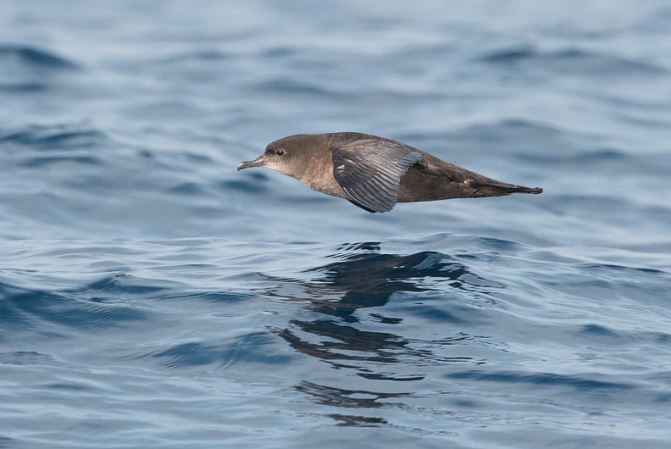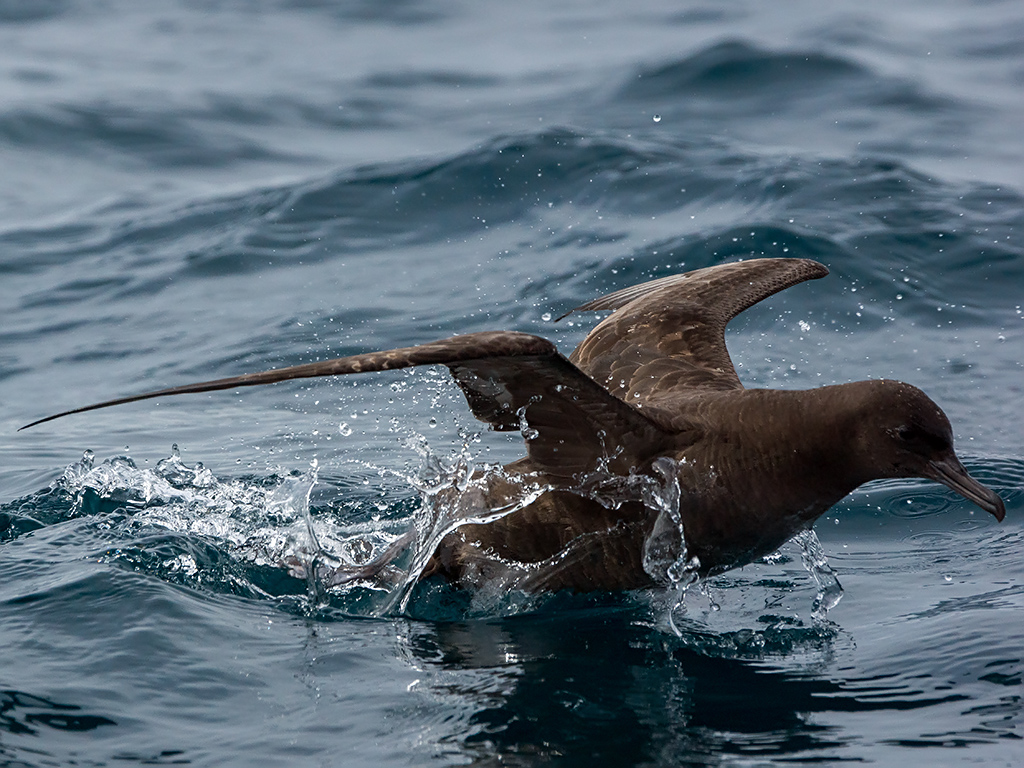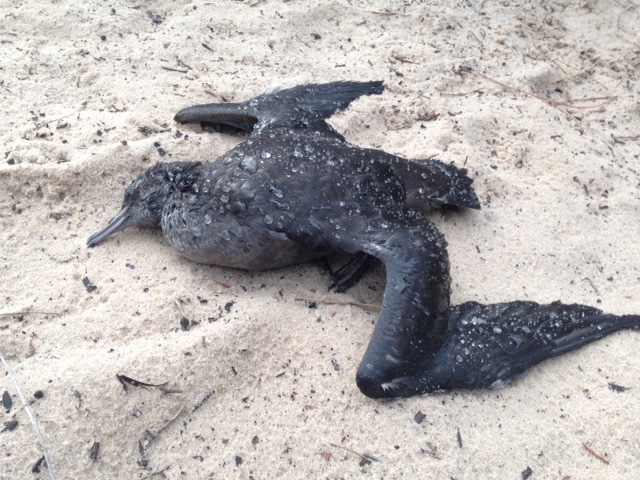Commonly known as the muttonbird in Australia.It is one of the most abundant seabirds in Australian waters. They migrate to Australia in enormous flocks and often a number of birds are washed up on beaches and die as a result of exhaustion, sickness and bad weather.
Dark smoky brown body with a paler coloured throat, slender bill, light brown feet, narrow wings pointed at the tip, brown to grey-brown underwing colouration (some have whitish underwings), short rounded tail, body up to 43cm long, when flying black toes extend just past tail tip.
Nests on grass and leaves, and in burrows underground.
Size
40 – 45 cm long
Behaviour
Diet
Feeds on krill, small fish, crustaceans and other small marine creatures.
Flight
Occurs in large flocks. Flocks travel offshore along undulating streams to feed on seas and coastlines in masses of Victoria.
Breeding
Lays one egg between November and December. Incubation for 52 - 55 days. Chick remains in nest for 94 days.
Field Guide
Improve your identification skills. Download your Short-Tailed Shearwater field guide here!





